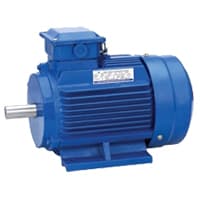Single Phase Motor Connection:
This diagram shows how to make the single-phase motor connection. In this circuit, we use two single-phase energy meters, a changeover switch, and a single-phase motor. First, we need to connect two energy meter connections with the changeover switch, then input power connection to the single-phase motor. Now this circuit is ready for use. If you want to know more about this circuit please check our youtube video below the post.
Advertisements
Components needed For this Project:
You can get the components from any of the sites below:
- Single Phase Energy Meter [See Buy Click Amazon]
- Dual Power ATS Generator Changeover [See Buy Click Amazon]
- Single Phase Motor (1 HP) [See Buy Click Amazon]
*Please note: These are affiliate links. I may make a commission if you buy the components through these links. I would appreciate your support in this way!
Advertisements
Components used to make the Single Phase Motor Connection:
A Single-Phase Energy Meter is a sort of Watt-Hour meter. It consists of two Electromagnets. Single-Phase Energy Meter is also Popularly known as a watt-hour meter. 1 Magnet is called the shunt magnet Ml which is Mounted with a Pressure coil. The Pressure coil is a long coil Made of fine Copper wire that is connected across the Supply single-phase line. Single-phase energy meters are suitable for measuring single-phase AC current flow frequencies of 50/60 Hz, which are used for fixed indoor installation systems.
02. Changeover Switch:
Change over switch is a medium of line transfer that is used in industry. Every industry has a supply line using change-over switches to supply power. A Changeover Switch is an Electrical Switch That Allows a load to be Changed from one Electrical Source to Another and vice Versa, Either Manually or Automatically. A Changeover Switch is specially made to transfer a house is electricity from the Normally used Commercial Power supply grid to a more local Generator when a power Outage Occurs.
A Single-Phase Motor is an Electrically-Powered Rotary Machine That Can Turn Electric Energy into Mechanical Energy. It Works by Using a Single-Phase Power Supply. Single-phase Motors Are Used in Equipment And Machines That Are Smaller in Size And Require Lower Horsepower. This Includes Equipment Such As Refrigerators, Pumps, Compressors, Fans, and Portable Drills. Single-phase motors Have a Similar Construction to The 3-phase Motor, Including an AC Winding That is Placed on The Stator And Short-Circuited Conductors That are Placed in a Cylindrical Rotor.
Thank You for visiting the website. Keep visiting for more Updates.
Frequently asked questions
Single-phase power supply is a two-wire alternating current (AC) power circuit. Typically, there is one power supply wire—the phase wire—and one neutral wire, with current flowing between the power wire (through the load) and the neutral wire.
Single-phase induction motors are not self-starting without an auxiliary stator winding driven by an out-of-phase current flow of nearly 90°. Once started the auxiliary winding is optional. The auxiliary winding of a permanent split capacitor pump has a capacitor in series with it during starting and running.
Single-phase three-wire systems (some call them two-phase or Edison) have 2 hot wires and a neutral wire. This is the most common of the residential system in the USA. If you measure from hot wire to hot wire you will get 240 volts and if you measure from either hot wire to neutral you will get 120 v.
DC motors can run only on a single-phase supply. A 3-phase AC motor is self-starting, but a single-phase AC motor requires a starting mechanism. DC motors are always self-starting in nature. In AC pumps, the armature is stationary while the magnetic field rotates.
Ceiling fans employ a single-phase PSC (permanent split capacitor) induction motor. The stator has 2 windings main and auxiliary and is hung from the ceiling. The rotor is present outside with an air gap in between along the periphery of the stator because the rotor has to move the fan blades of the mounted on the housing.
Read more Single Phase Wiring
What is a kilowatt-hour (kWh) | kwh formula | What does kwh mean
Introduction to Electrical Units and CircuitskW and kWh on your electricity bill As your home uses electricity during...
What is the Difference Between kVA | What does KVA mean | kVA formula
Difference Between KVA ExplainedWhat does KVA Mean? There are technical terms aplenty when it comes to generators, and...
Power Factor | Power Unit | Energy | Electricity Unit
Power factor definition | Calculating Power FactorPower Factor Values In a purely resistive circuit, the power factor...




0 Comments